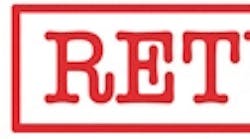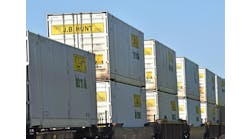The reverse logistics component of supply chain management is more complex to manage than supplier-forward material flow. That’s because it involves many processes, some of which generate revenue while others don’t (i.e. recalls and warranty). It is estimated that more than $500 billion of U.S. B2B product value is employed annually in a return process, with about $50 billion of those expenditures incurred getting those items back to the market. Below is a listing of the drivers of return processes:
• Rental/operating lease/loaner: The customer is supplied an item in usable condition, and the customer is required to return the same usable item back to the supplier on a predetermined date. The supplier retains item ownership throughout duration of its use by the customer.
• Supplier-Forward Like-Kind Exchange [SF-LKE] transaction: The supplier ships the customer a usable item, and when the customer receives the item, the customer is required to send the supplier back a similarly configured unusable item.
• Customer-Forward Like-Kind Exchange [CF-LKE] transaction: The customer ships the supplier an unusable item, and when the supplier receives the item, the supplier is required to send the customer back a similarly configured usable item.
• Renew-and-return program: The customer delivers the supplier an unusable item, the supplier inducts the item into a process which changes the condition from unusable to usable, and then the supplier returns the item back to the customer. The customer retains item ownership throughout duration of its possession by the supplier.
• Credit: The customer returns a product with no expected further transaction.
The organizations involved in the above transactions focus on handling new and not new-condition products, primarily equipment and product support parts. Below are the six types of organizations handling returns:
1. OEMs
• Manufacturing unit of new-condition products (i.e., lift builder)
• Renewal unit of products; repairers, remanufacturers, overhaulers, rebuilders, others (i.e., OEM lift rebuilder business unit)
2. OEM authorized distributors
• Distributors of OEM new-condition products
• Distributors of OEM renewed products
• Renewal unit of customer product
3. Independent distributors
4. Distributors of renewed products
• Renewal unit of customer product
• Independent renewal unit of product
5. Rental/operating leasing/loaner firms (ownership always retained by supplier)
6. Third-party logistics [3PL] enterprises providing returns outsourced services for any of the above.
Managing Complexity
The complexity of returns is primarily driven by a supplier not always receiving the condition and/or configuration of the items demanded from their customer. It is estimated that 15-25% of all return B2B transactions experience one or both of these mismatches. The resolution of these mismatches involves an estimated 30-50% of all the resources employed in return processes. The following are two examples of condition and configurations mismatches between demand and return:
Condition mismatch: The item returned by a customer from a rental transaction is required to be in a usable condition, but the supplier’s receipt/test process indicates an unusable item.
Configuration mismatch: On-board computer model ABC-revision-2 was shipped by the supplier for a Supplier-Forward-Like-Kind-Exchange transaction, but the customer returned a computer model ABC-revision-1.
As a result of these condition/configuration mismatches, significant changes to the following records are required:
• Demand of returns
• Supply of returns
• Balance sheet for supply
• Income statement for demands and supply.
Robust repeatable receiving processes for managing the condition/configuration of mismatched returns should be employed to mitigate inefficiencies of the reverse logistics processes. Below is an example of a scenario in which a mismatch has occurred and the changes that are required to “make things right:”
Product ABC-3 Serial Number 123 is supplied to a customer by the OEM as a Supplier-Forward-Like-Kind Exchange for a repairable Line Replacement Unit (LRU) in a remanufactured condition.
ABC-3 Serial Number balance sheet value is $1,000; it is moved from the supplier to the customer location, but ownership is not transferred.
The customer is billed $500 for the transaction—the value of the remanufacturing process, not of the product.
Product ABC-2 Serial Number 345 is returned in an unusable condition to the OEM.
ABC-2 is moved from the customer location back to the supplier location. The supplier balance sheet reflects a value of $1,000 with an accrual value of -$600.
The customer is billed an additional $200 for the transaction due to upgrades required to reconfigure ABC-2 to ABC-3; terms of agreement were that customer would ship ABC-3, with supplemental charges incurred if less a revision level than ABC-3.
Demand established upon the OEM remanufacturing induction schedule for ABC-3 is changed to ABC-2; more work is now required to be performed.
The OEM incurs a service cost of $600 for the remanufacturing process and indirect costs of ABC-2 (accrual value); a standard cost approach. Note that this is not the balance sheet valuation and that there are other ways to financially account for this transaction.
The OEM incurs a $100 “profit;” $500 initial revenue + $200 supplemental revenue - $600 remanufacturing standard cost.
The OEM actually remanufactures the returned unit for $635 and inducts it in the exchange pool. The income statement incurs a -$35 unfavorable variance and the balance sheet is once again $1,000.
This example is a highly simplified description of the demand/supply/financial transactional stream. The point is that “lots of stuff” must happen when there is mismatch of condition and/or configuration
Technology: only Part of the Answer
The use of a robust application software product is the primary means to ensure that the proper transaction streams are enforced for condition/configuration changes. Because of the unique characteristics of different industry sectors, a 100% off-the-shelf application software solution will not be found. Most software products will provide you with a 70-75% demand/supply/financial transaction solution.
The financial and customer service impact of the poor management of dealing with mismatched condition/configuration transactions is different for each organization. The important thing is to establish robust, repeatable processes to manage mismatches. That will make any organization more efficient.
Ron Giuntini is principal of Giuntini & Company, Inc. (www.giuntinicompany.com). He has 36 years of experience in business-to-business supply chain management for both supplier-forward and customer-return operations. He can be reached at [email protected].



